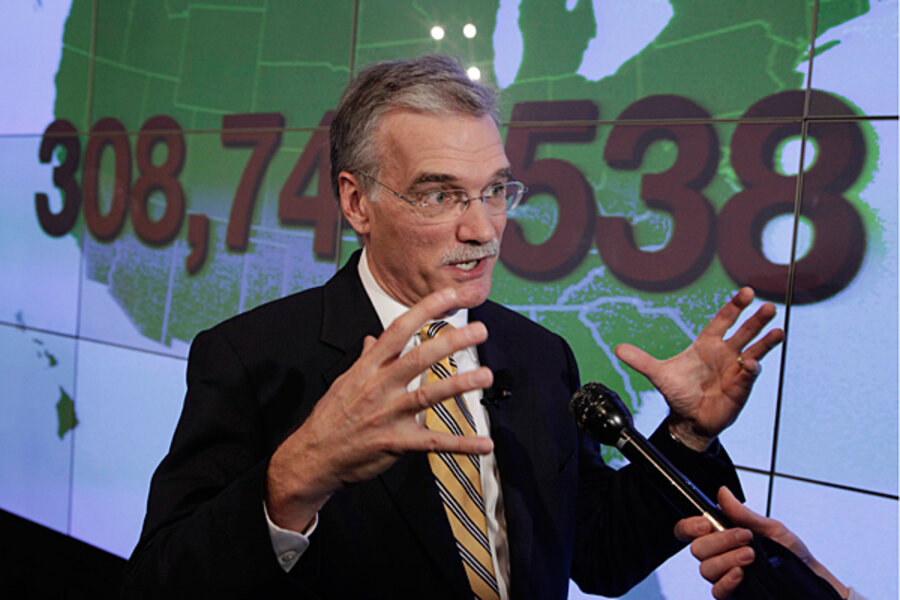2010 census results: Why did US population growth slow?
Loading...
| Washington
The United States population has crashed through the 300 million mark, according to just-released 2010 census data. The total number of people living in the US as of April 1 this year was 308,745,538. That means the country has added about 27 million residents over the past 10 years.
That sounds like a lot of people, and it is. Only two other decades in US history have seen a larger number of people added to the census rolls. But since the US population is already quite large, even a big number of new additions can result in relatively slow growth, percentage-wise. And that’s just what the new census numbers reveal.
It’s one of the 2010 census’ most intriguing results: The US population has grown at only a 9.7 percent pace since 2000. In the context of US history, that’s quite slow. Only one other decade has seen slower growth, in fact. That was 1930 to 1940, when total population gain was 7.3 percent, according to Census Bureau records.
Why was growth so slow this time around? Well, one main cause was probably the powerful recession of the past several years. Hard times cause some couples to put off having children. They also convince more immigrants to return to or stay in their native lands instead of traveling to the US for work.
Think about the 1930s – it was the era of the Great Depression. No wonder it was the decade with the least vigorous US population growth of all time.
Another factor at work here is sheer size. The bigger the nation gets, the more the number of people it has to add just to maintain the same percentage of growth. That’s a trend that’s clear if you look at the nation over the past century. The 1910 census showed US growth of 21 percent. The comparable figure from the 1920 count was 15 percent.
“Over the last 100 years the rate of growth of the US population has gradually slowed ... but there is a lot of variation across decades,” said Census Bureau director Robert Groves on Tuesday.
The long-term trend in the US is a gradual shift in population away from the Northeast and Midwest to the South and West. For the first time, the West is more populous than the Midwest, according to 2010 census figures.
A look at the map of 2010 census results depicts this movement. The states with the smallest population growth (or actual shrinkage, in the case of Michigan) are a wedge that begins in New England, stretches over to the Great Plains, and then runs down the Mississippi River Valley.
The states with the highest population growth rates are a kind of bowl underneath this wedge shape. North Carolina grew by 18.5 percent over the past decade, for instance. Texas grew by 20.6 percent. Nevada remains the fastest-growing state in the nation, with a 35.1 percent growth rate since 2000.
The US remains a fast-growing country compared with many other industrial nations. Germany's population is shrinking, for example. Britain grew by roughly 5 percent over the past decade.
And immigration remains a powerful force in US demographics. Roughly three-quarters of the US population growth that did occur over the past decade was due to immigrants, according to an analysis of census data by the Center for Immigration Studies.
The census counted 13.1 million new immigrants, both legal and illegal, who have arrived in America since 2000. In addition, immigrant women gave birth to 8.2 million children in the decade.





